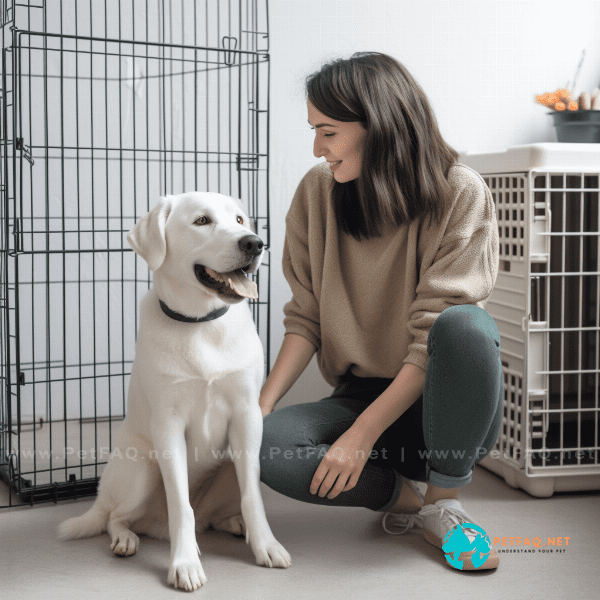Table of Contents
- Understanding Dog Training Collars: Types and Functions
- Choosing the Right Dog Training Collar for Your Pet
- Using Positive Reinforcement Techniques with Training Collars
- Training Basic Commands with Dog Training Collars
- Addressing Behavioral Issues with Training Collars
- Introducing Your Dog to a Training Collar: Tips and Techniques
- Common Mistakes to Avoid when Using Dog Training Collars
- Maintaining and Cleaning Your Dog Training Collar
- Safety Considerations for Using Dog Training Collars
- Advanced Training Techniques with Dog Training Collars
Understanding Dog Training Collars: Types and Functions
Dog training collars are tools used to aid in obedience training and addressing behavioral issues in dogs. There are several types of Dog training collars available in the market, each with unique features and functions. Understanding the different types of collars and their functions can help you choose the right one for your pet and ensure its effectiveness in training.
Different Types of Dog Training Collars
1. Flat Collars
Flat collars are the most common type of collars used for everyday wear and are suitable for most dogs. They come in various materials such as leather, nylon, or cotton and can be customized with name tags and other accessories.
2. Martingale Collars
Martingale collars are designed for dogs that tend to slip out of their collars or have necks larger than their heads. These collars have a limited slip feature that prevents them from choking or slipping out of the collar.
3. Choke Chains
Choke chains are metal collars designed to tighten around a dog’s neck when pulled. They are intended to discourage pulling on the leash and promote obedience training.
4. Prong Collars
Prong collars, also known as pinch collars, have metal prongs that exert pressure on a dog’s neck when pulled. They are intended to discourage pulling and address behavioral issues such as aggression and excessive barking.
5. Shock Collars
Choosing the Right Dog Training Collar for Your Pet
Choosing the right dog training collar for your pet depends on various factors such as its breed, temperament, and size. It is essential to choose a collar that is comfortable and fits properly, as a poorly fitting collar can cause injury and discomfort to your pet. Additionally, it is crucial to understand the collar’s function and limitations before using it on your dog.
When selecting a collar, consider its durability and ease of use. Some collars require specific techniques for proper usage, while others can be easily adjusted to fit your dog’s needs. It is also essential to choose a collar that is appropriate for your dog’s training needs and behavioral issues.
In conclusion, understanding the different types of dog training collars and their functions can help you choose the right one for your pet. It is essential to select a collar that is comfortable and fits properly, and to consider its durability and ease of use. When using a dog training collar, always prioritize your pet’s safety and well-being.
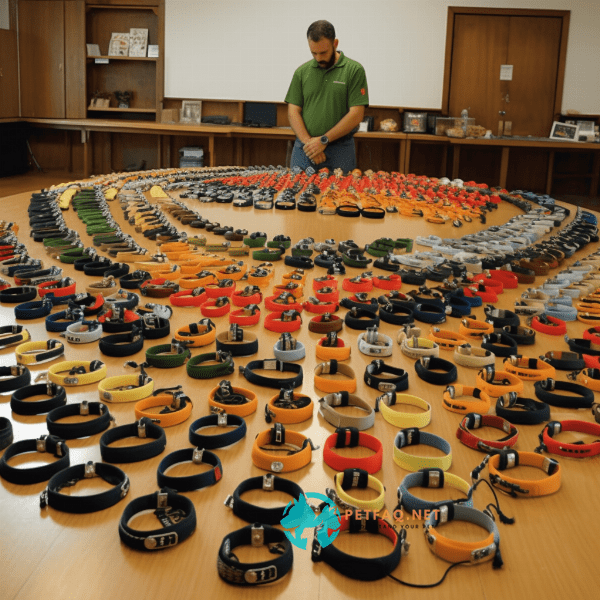
Choosing the Right Dog Training Collar for Your Pet
Choosing the right dog training collar for your pet is a crucial step in obedience training and addressing behavioral issues. With so many options available in the market, it can be overwhelming to select the best collar for your pet. In this section, we will discuss the factors you should consider when choosing a dog training collar.
Consider Your Dog’s Breed and Temperament
The type of dog training collar you choose will depend on your dog’s breed and temperament. Some breeds respond better to certain collars than others, while some dogs may have a higher pain tolerance and require more significant corrections.
For instance, flat collars and martingale collars are suitable for most breeds and temperaments. On the other hand, choke chains and prong collars should only be used on dogs with a higher pain tolerance and a tendency to pull on the leash. Shock collars should be used as a last resort for serious behavioral issues and under the guidance of a professional trainer.
Consider the Collar’s Function and Limitations
Different dog training collars have different functions and limitations. Some collars are designed to discourage pulling on the leash, while others are intended to address specific behavioral issues such as aggression and excessive barking.
It is essential to understand the collar’s function and limitations before using it on your pet. Some collars, such as choke chains and prong collars, can cause injury and discomfort if not used correctly. It is also crucial to follow the manufacturer’s instructions and use the collar as intended.
Consider Your Training Needs
When choosing a dog training collar, consider your training needs and goals. Are you training your pet for obedience, or are you addressing a specific behavioral issue? Do you need a collar for everyday wear or only during training sessions?
Flat collars and martingale collars are suitable for everyday wear and basic obedience training. Choke chains and prong collars are ideal for addressing specific behavioral issues, while shock collars should only be used as a last resort for serious issues.
In conclusion, choosing the right dog training collar for your pet is essential for successful obedience training and addressing behavioral issues. Consider your dog’s breed and temperament, the collar’s function and limitations, and your training needs when selecting a collar. Always prioritize your pet’s safety and well-being when using a dog training collar.

Using Positive Reinforcement Techniques with Training Collars
Dog training collars are tools that can be used to reinforce positive behavior in dogs. Positive reinforcement techniques involve rewarding your pet for exhibiting desired behaviors, rather than punishing them for negative behaviors. In this section, we will discuss how you can use positive reinforcement techniques with dog training collars.
Combine Collar Training with Positive Reinforcement
When using a dog training collar, it is essential to combine it with positive reinforcement techniques. Positive reinforcement involves rewarding your pet for exhibiting desired behaviors, such as sitting or staying, with treats, toys, or verbal praise.
By using positive reinforcement, you can create a positive association between the collar and the desired behavior, making training sessions more effective and enjoyable for your pet.
Start with Basic Commands
When introducing your dog to a training collar, start with basic commands such as sit, stay, and come. These commands are easy to learn and help build a foundation for more advanced training.
Use positive reinforcement techniques to reward your pet for exhibiting the desired behavior, such as giving a treat or verbal praise. As your pet becomes more familiar with the collar and the training process, you can gradually move on to more advanced commands and behaviors.
Seek Professional Guidance
If you are new to using dog training collars or are having difficulty with obedience training, seek professional guidance. A professional dog trainer can provide guidance on the appropriate use of training collars, as well as help you develop an effective training plan that incorporates positive reinforcement techniques.
In conclusion, using positive reinforcement techniques with dog training collars can be an effective way to reinforce positive behavior and build a stronger bond with your pet. Combine collar training with positive reinforcement, start with basic commands, be consistent and patient, and seek professional guidance if needed. Always prioritize your pet’s safety and well-being when using a dog training collar.
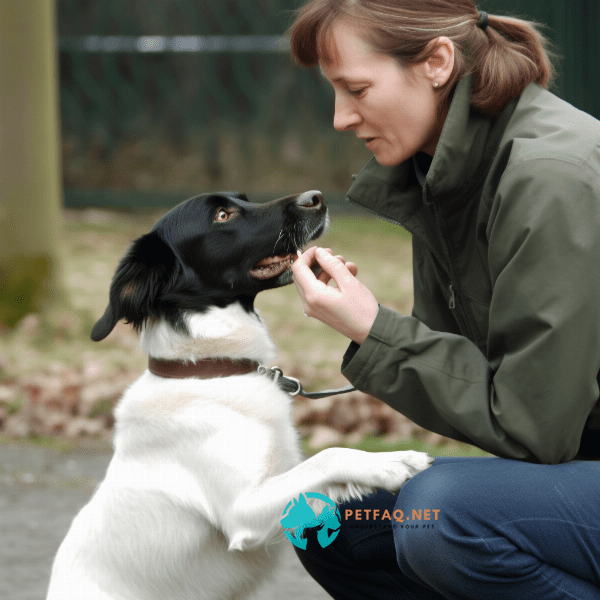
Training Basic Commands with Dog Training Collars
Basic obedience training is an essential part of dog ownership and can be accomplished using dog training collars. In this section, we will discuss how to use dog training collars to train basic commands.
Introduce the Collar Gradually
Before using a dog training collar for obedience training, it is important to introduce it to your pet gradually. Allow your dog to become comfortable with wearing the collar for short periods, and gradually increase the length of time it is worn.
Introducing the collar gradually can help prevent your pet from becoming fearful or anxious during training sessions.
Avoid Punishment-Based Techniques
Avoid using punishment-based techniques when training your pet with a dog training collar. Punishing your pet for not following commands can cause fear, anxiety, and aggression, making training sessions less effective and potentially harmful to your pet.
Instead, use positive reinforcement techniques to reward your pet for exhibiting desired behaviors, and redirect negative behaviors to more positive ones.
Gradually Increase the Level of Difficulty
As your pet becomes more familiar with the collar and the basic commands, gradually increase the level of difficulty. For example, increase the distance between you and your pet when giving commands, or introduce distractions to see how well your pet responds to commands in different situations.
Gradually increasing the level of difficulty will help reinforce positive behavior and help your pet become more confident in obeying commands.
In conclusion, training basic commands with a dog training collar requires gradual introduction, positive reinforcement techniques, avoiding punishment-based techniques, consistency and patience, and gradually increasing the level of difficulty. Always prioritize your pet’s safety and well-being when using a dog training collar.

Addressing Behavioral Issues with Training Collars
Dog training collars can also be used to address behavioral issues in dogs, such as aggression, excessive barking, and jumping. In this section, we will discuss how to use dog training collars to address these behavioral issues.
Understand the Root Cause of the Behavioral Issue
Before using a dog training collar to address a behavioral issue, it is important to understand the root cause of the problem. Behavioral issues can be caused by a variety of factors, such as fear, anxiety, or a lack of socialization.
Understanding the root cause of the problem can help you develop an effective training plan that addresses the underlying issue.
Choose the Right Collar for the Issue
Choosing the right dog training collar for the behavioral issue is essential for effective training. For example, a prong collar may be appropriate for addressing aggression, while a shock collar may be necessary for excessive barking.
It is important to choose a collar that is appropriate for the behavioral issue and to use it as intended to prevent injury or discomfort to your pet.

Introducing Your Dog to a Training Collar: Tips and Techniques
Introducing your dog to a training collar can be a gradual process that requires patience and care. In this section, we will discuss some tips and techniques for introducing your dog to a training collar.
Choose the Right Collar
Choosing the right dog training collar for your pet is essential for successful training. Consider your pet’s breed, size, and temperament when selecting a collar.
Gradual Introduction
Introduce the training collar gradually to your pet to prevent fear or anxiety. Allow your pet to wear the collar for short periods and gradually increase the length of time it is worn.
During the introduction process, provide treats and positive reinforcement to create a positive association between the collar and positive experiences.
Make the Collar Comfortable
Ensure that the collar fits properly and is comfortable for your pet. A poorly fitting collar can cause discomfort, injury, or even lead to your pet slipping out of the collar.
Adjust the collar to fit your pet properly and make sure that it is not too tight or too loose. You should be able to fit two fingers comfortably between the collar and your pet’s neck.
Monitor Your Pet’s Behavior
Monitor your pet’s behavior during the introduction process and training sessions. Watch for signs of fear, anxiety, or discomfort and adjust the training plan accordingly.
If your pet exhibits negative behaviors such as excessive pulling or jumping, redirect the behavior to more positive ones and use positive reinforcement techniques to reward the desired behavior.
In conclusion, introducing your dog to a training collar requires choosing the right collar, gradual introduction, positive reinforcement techniques, making the collar comfortable, and monitoring your pet’s behavior. By following these tips and techniques, you can help your pet become comfortable with wearing a training collar and make obedience training and addressing behavioral issues more effective.
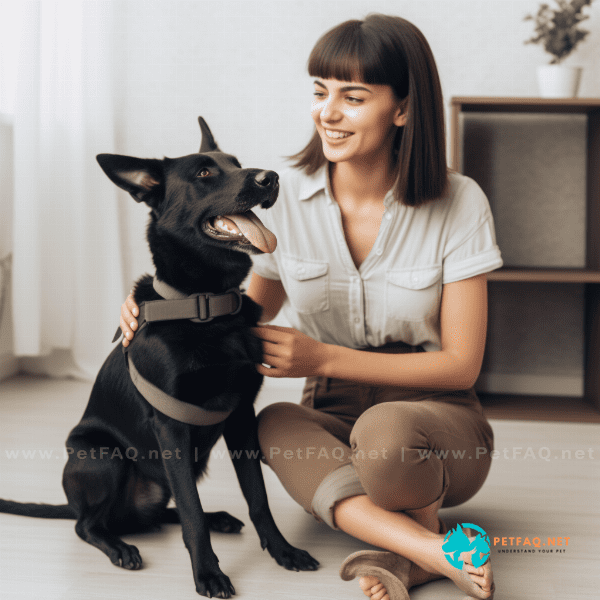
Common Mistakes to Avoid when Using Dog Training Collars
Using a dog training collar can be a valuable tool in obedience training and addressing behavioral issues. However, there are common mistakes that pet owners make when using dog training collars that can be harmful or ineffective. In this section, we will discuss some common mistakes to avoid when using dog training collars.
Using the Wrong Type of Collar
Using the wrong type of dog training collar can be ineffective or harmful to your pet. For example, using a choke chain or prong collar on a dog that is not suited for these types of collars can cause injury, discomfort, or even behavioral problems.
It is important to choose the right type of collar for your pet’s breed, size, and temperament, and to use it as intended by the manufacturer.
Using the Collar Incorrectly
Using a dog training collar incorrectly can also be ineffective or harmful. For example, using a shock collar at too high a level can cause pain, injury, or even trauma to your pet.
It is important to read the manufacturer’s instructions carefully and to use the collar as intended. Seek professional guidance if you are unsure how to use the collar properly.
Using the Collar as the Sole Training Method
Using a dog training collar as the sole training method can be ineffective in addressing behavioral issues. It is important to use positive reinforcement techniques and to address the underlying causes of the problem.
Using a dog training collar should be one component of a comprehensive training plan that incorporates positive reinforcement techniques and addresses the underlying causes of the problem.
Punishing Your Pet with the Collar
Punishing your pet with the collar can cause fear, anxiety, and aggression, and can make training sessions less effective. Punishing your pet for negative behavior can also lead to a breakdown in the bond between you and your pet.
Failing to Monitor Your Pet’s Behavior
Monitor your pet’s behavior during training sessions and adjust the training plan to ensure that it is effective and safe for your pet.
In conclusion, using dog training collars can be an effective tool in obedience training and addressing behavioral issues. However, it is important to avoid common mistakes such as using the wrong type of collar, using the collar incorrectly, using the collar as the sole training method, punishing your pet with the collar, and failing to monitor your pet’s behavior. By avoiding these mistakes and using positive reinforcement techniques, you can create a positive association between your pet and the collar and help your pet become a well-behaved and happy companion.
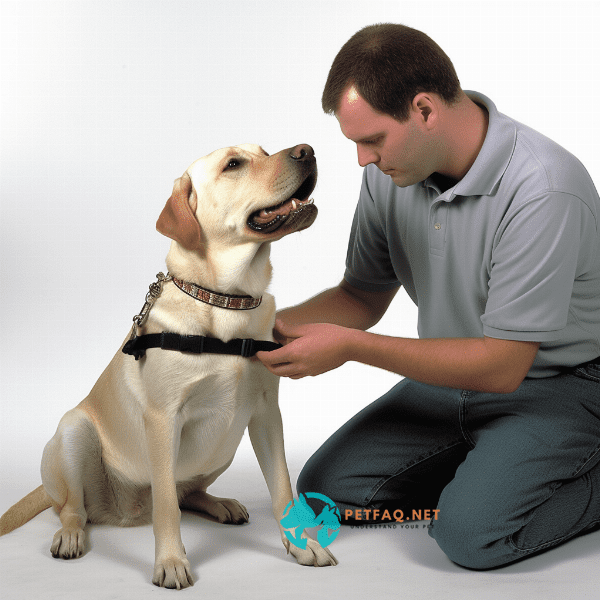
Maintaining and Cleaning Your Dog Training Collar
Proper maintenance and cleaning of your dog training collar is essential for ensuring its effectiveness and longevity. In this section, we will discuss some tips for maintaining and cleaning your dog training collar.
Regular Inspection
Regularly inspect your dog training collar for signs of wear and tear, such as fraying or weakening of the material. Replace the collar if it is damaged or no longer effective.
Inspect the collar’s hardware, such as buckles and clasps, to ensure that they are secure and functioning properly. Replace any hardware that is damaged or broken.
Cleaning the Collar
Clean your dog training collar regularly to prevent odor and bacteria buildup. Use a mild detergent and warm water to clean the collar, and rinse thoroughly.
Avoid using harsh chemicals or bleach that can damage the collar’s material. Allow the collar to air dry completely before using it again.
Storing the Collar
Store your dog training collar in a dry and cool place, away from direct sunlight and moisture. Avoid storing the collar with other items that can damage the collar’s material, such as sharp objects or chemicals.
Adjusting the Collar
Regularly adjust the collar as your pet grows or gains or loses weight to ensure that it fits properly.
Lubricating the Hardware
Lubricate the hardware, such as buckles and clasps, with a silicone-based lubricant to keep them functioning properly and prevent rust or corrosion.
Avoid using oil-based lubricants or grease that can attract dirt and debris, causing the hardware to malfunction.
In conclusion, maintaining and cleaning your dog training collar requires regular inspection, cleaning the collar properly, storing the collar in a dry and cool place, adjusting the collar to fit properly, and lubricating the hardware. By following these tips, you can ensure that your dog training collar is effective and lasts for a long time, providing a valuable tool for obedience training and addressing behavioral issues in your pet.

Safety Considerations for Using Dog Training Collars
Using a dog training collar can be an effective tool for obedience training and addressing behavioral issues, but it is important to prioritize your pet’s safety when using one. In this section, we will discuss some safety considerations for using dog training collars.
Using the Collar as Intended
Using the dog training collar as intended by the manufacturer is crucial for your pet’s safety. Read the manufacturer’s instructions carefully and follow them closely.
Avoid using the collar in ways that can cause harm or discomfort to your pet, such as using it too tightly or at too high a level of stimulation.
Avoiding Collar Neglect
Neglecting the dog training collar can lead to safety issues. Regularly inspect the collar for signs of wear and tear, clean it regularly to prevent bacteria buildup, and store it in a dry and cool place away from direct sunlight and moisture.
Adjust the collar to fit your pet properly and lubricate the hardware to prevent rust or corrosion.
Seeking Professional Guidance
Seeking professional guidance can help ensure your pet’s safety when using a dog training collar. A professional dog trainer can provide guidance on the appropriate use of training collars and develop an effective training plan that addresses the underlying issue.
In conclusion, prioritizing your pet’s safety when using a dog training collar requires choosing the right collar, using the collar as intended, monitoring your pet’s behavior, avoiding collar neglect, and seeking professional guidance if needed. By following these safety considerations, you can ensure that your pet remains safe and healthy during obedience training and addressing behavioral issues.

Advanced Training Techniques with Dog Training Collars
Once your pet is comfortable with wearing a dog training collar and has mastered basic commands, you may want to consider advanced training techniques that utilize the collar. In this section, we will discuss some advanced training techniques with dog training collars.
Off-Leash Training
Using a dog training collar for off-leash training can be a valuable tool in teaching your pet to obey commands and stay safe in open spaces. Begin by practicing off-leash training in a fenced area or on a long leash.
Use the collar to reinforce commands such as “come” or “stay,” and reward your pet with treats and positive reinforcement when they obey.
Distance Training
Using a dog training collar for distance training can help teach your pet to obey commands from a distance. Begin by practicing distance training in a controlled environment, gradually increasing the distance between you and your pet.
Boundary Training
Using a dog training collar for boundary training can help teach your pet to stay within a specific area or boundary. Begin by defining the boundary using visual markers or flags and practice with a long leash.
Tracking Training
In conclusion, advanced training techniques with dog training collars include off-leash training, distance training, boundary training, agility training, and tracking training. These techniques can help improve your pet’s obedience, coordination, speed, and ability to follow scent trails. By using positive reinforcement techniques and following the manufacturer’s instructions, you can help your pet become a well-trained and happy companion.
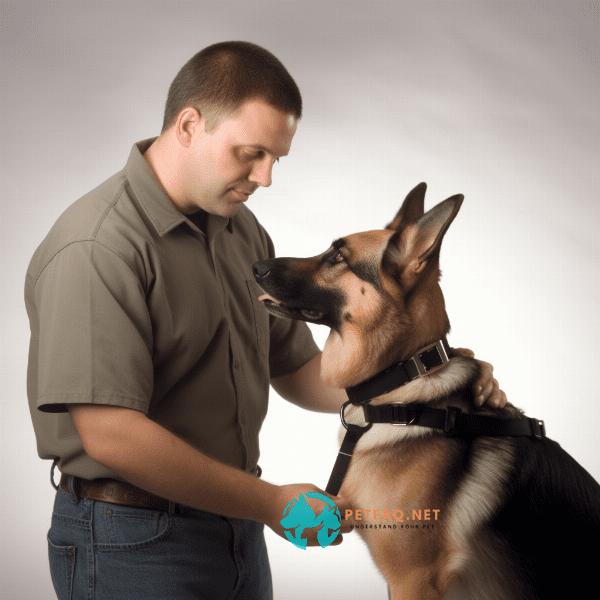
Frequently Asked Questions (FAQs) about Dog training collars:
1. How do you choose the right size and fit for a dog training collar?2. What are the drawbacks of using a dog training collar?
3. How do you properly use a dog training collar?
4. Can dog training collars be used to address aggressive behavior in dogs?
5. What is the cost of a dog training collar?



